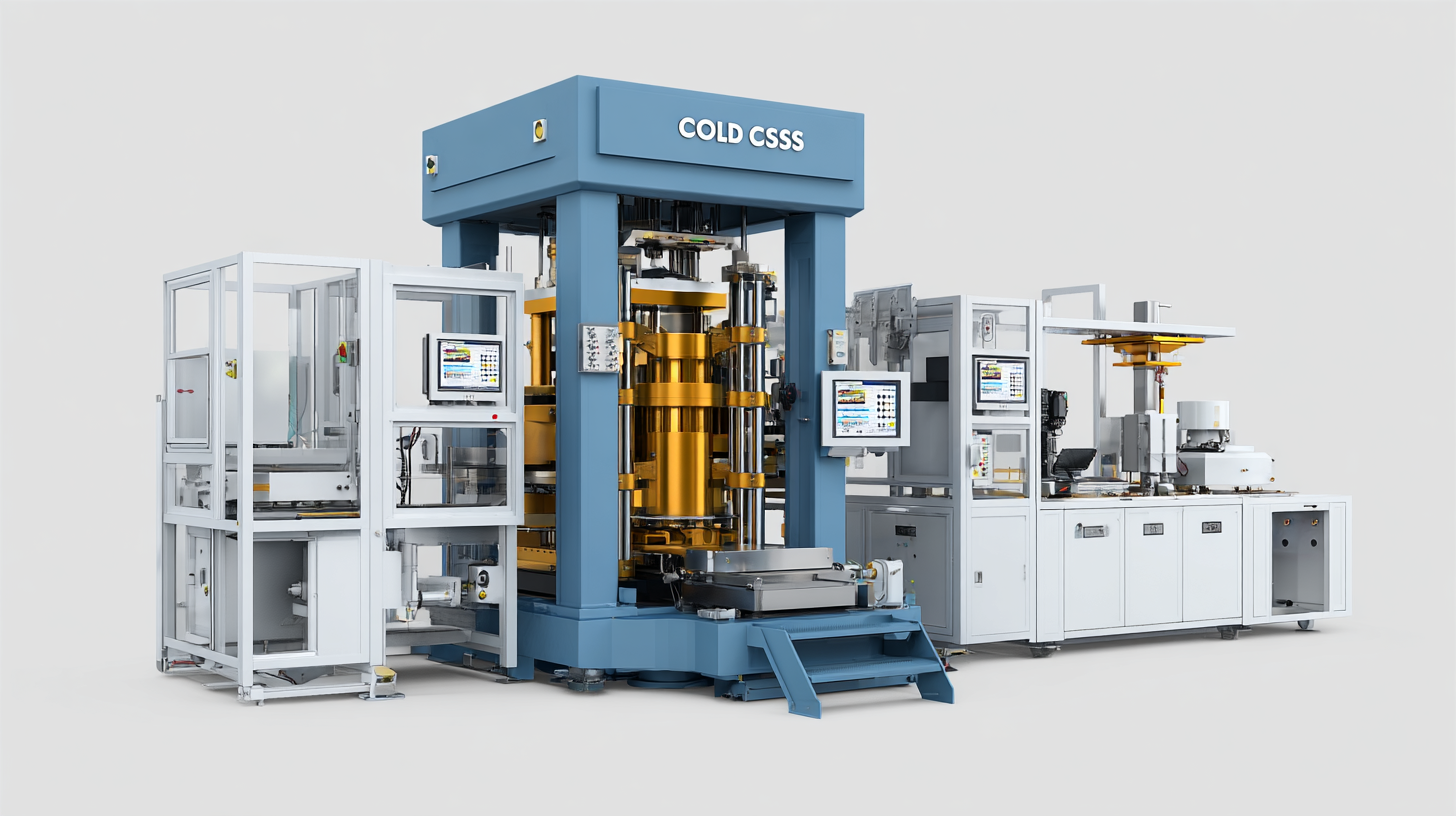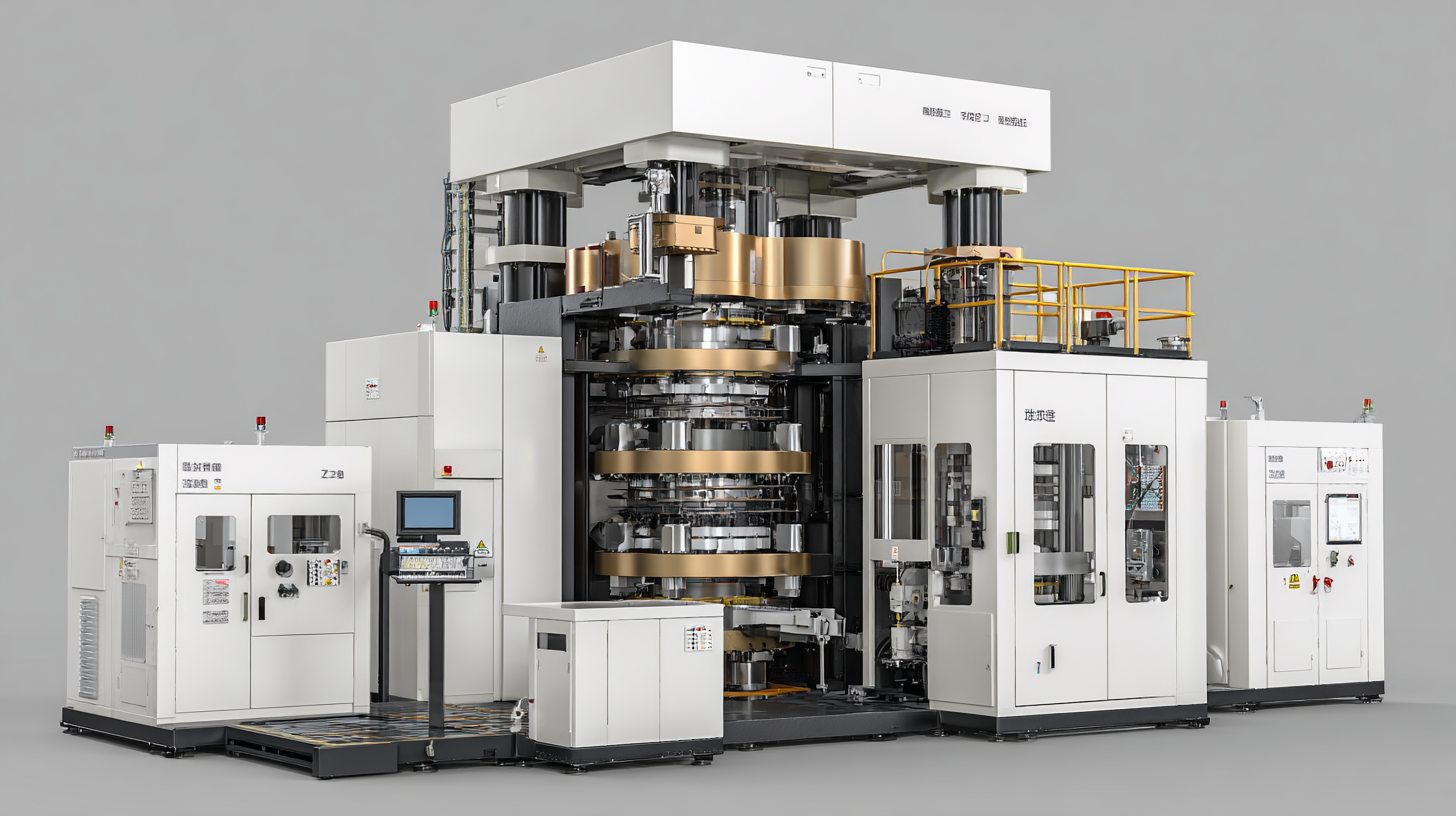Market Trends and Predictions for the Best Cold Isostatic Pressing Machines by 2025
As the manufacturing sector increasingly gravitates towards automation and enhanced productivity, the demand for advanced Cold Isostatic Pressing Machines (CIPMs) is poised for significant growth. According to a recent market analysis by Research and Markets, the global market for cold isostatic pressing is projected to reach $2.2 billion by 2025, driven by the surging need for high-density materials across industries such as aerospace, automotive, and electronics. With Chinese manufacturers at the forefront, emphasizing quality and innovation, they are strategically positioned to dominate the global export market. This trend highlights not only the technological advancements in the production of CIPMs but also the significance of quality in the manufacturing process. As we delve into the key market trends and predictions for the best Cold Isostatic Pressing Machines by 2025, it becomes clear that a focus on quality, alongside competitive pricing, will be crucial in maintaining a leading position in the global arena.

Emerging Technologies Shaping Cold Isostatic Pressing Machines by 2025
As we look toward 2025, emerging technologies are set to redefine the landscape of cold isostatic pressing machines. The U.S. isostatic pressing market, already valued at USD 1.7 billion in 2024, is predicted to experience significant growth, with a projected CAGR of 7.5% from 2025 to 2032. This growth trajectory can be attributed to the increasing demand for advanced manufacturing solutions across various industries, including aerospace and electronics.
Innovations in extraction techniques also play a pivotal role in shaping the future of cold isostatic pressing. For example, a recent breakthrough in using ultrasound combined with cold isostatic pressure for extracting flavonoids demonstrates the potential of integrating novel methods into existing processes. Such technologies not only enhance efficiency and product yield but also align with the growing emphasis on sustainable practices in manufacturing. As companies adopt these advancements, we can expect a transformation in the capabilities and applications of cold isostatic pressing machines by 2025, paving the way for new industry standards.
Market Trends for Cold Isostatic Pressing Machines (2023-2025)
This bar chart illustrates the predicted market growth and technological advancements for cold isostatic pressing machines from 2023 to 2025. The data signifies increasing demand driven by emerging technologies and applications across various industries.
Key Market Players and Their Innovations in Cold Isostatic Pressing
The cold isostatic pressing market is experiencing notable growth, driven primarily by advancements and innovations from key market players. Industry leaders are focusing on enhancing the performance and efficiency of their pressing machines to cater to the increasing demand across various sectors, including aerospace and automotive. The global market for isostatic pressing is projected to expand significantly, with estimates indicating a rise from approximately USD 8.1 billion in 2023 to USD 11.7 billion by 2028, reflecting a compound annual growth rate (CAGR) of 7.6%. This growth trajectory highlights the critical role of innovative technology in the development of cold isostatic pressing machines.
As manufacturers strive to stay competitive, they are investing in research and development to introduce cutting-edge features and functionalities in their machines. The trend towards automation and smart technology integration is expected to revolutionize the isostatic pressing landscape. Key players are not only focusing on enhancing machine performance but also on sustainability and cost-effectiveness, ensuring that their solutions meet modern industrial demands. With these innovations, the cold isostatic pressing market is set to thrive, positioning itself as a vital component in the manufacturing processes of various industries by 2025 and beyond.
Sustainability Trends Impacting Cold Isostatic Pressing Equipment Choices
Sustainability is becoming a central focus in the manufacturing industry, significantly influencing the choices made in cold isostatic pressing (CIP) equipment. As organizations aim to reduce their carbon footprints, there has been a notable shift towards machines that incorporate energy-efficient technologies and sustainable materials. According to a report by Research and Markets, the global cold isostatic pressing market is expected to grow at a CAGR of 5.4% through 2025, driven largely by advancements that prioritize environmental sustainability.
One of the key trends is the incorporation of recyclable materials in the production of CIP machines. A recent analysis by Mordor Intelligence highlighted that more than 30% of manufacturers are now seeking suppliers who demonstrate a commitment to sustainability through their manufacturing processes. In addition, companies are increasingly investing in machines that utilize renewable energy sources, reducing overall operational emissions. By 2025, it is anticipated that these equipment choices will not only optimize production efficiency but also align with stringent global regulations aimed at fostering environmentally friendly practices in industrial operations.
Market Trends and Predictions for the Best Cold Isostatic Pressing Machines by 2025
| Year | Market Share (%) | Sustainability Initiatives | Technological Innovations | Projected Growth Rate (%) |
|---|---|---|---|---|
| 2021 | 15 | Shift towards eco-friendly materials | Automated control systems | 5 |
| 2022 | 18 | Recycling of waste materials | Integration of AI | 6 |
| 2023 | 20 | Reduced energy consumption | Advanced robotics | 7 |
| 2024 | 23 | Use of biodegradable lubricants | IoT connectivity | 8 |
| 2025 | 25 | Sustainable sourcing of materials | Smart machine learning algorithms | 9 |
Forecasting Demand: Industries Driving the Growth of Isostatic Pressing Machineries
 The isostatic pressing industry is poised for significant growth by 2025, driven by a variety of sectors. Recent analyses reveal that the U.S. isostatic pressing market, valued at USD 1.7 billion in 2024, is expected to exceed USD 3 billion by 2032. This surge is largely fueled by increased demand in advanced manufacturing processes, such as powder metallurgy and synthetic rubber production, where isostatic pressing techniques enhance product durability and performance.
The isostatic pressing industry is poised for significant growth by 2025, driven by a variety of sectors. Recent analyses reveal that the U.S. isostatic pressing market, valued at USD 1.7 billion in 2024, is expected to exceed USD 3 billion by 2032. This surge is largely fueled by increased demand in advanced manufacturing processes, such as powder metallurgy and synthetic rubber production, where isostatic pressing techniques enhance product durability and performance.
Tip: For industries planning to adopt isostatic pressing machines, investing in technology that accommodates both high production volumes and precision is essential to maintain competitive advantages.
In addition to manufacturing, industries like aerospace and automotive are leading the charge in expanding the use of isostatic pressing machines. Their pursuit of lightweight, high-strength materials aligns perfectly with the advantages provided by isostatic pressing, further emphasizing the technique’s importance in modern production.
Tip: When selecting isostatic pressing machinery, consider not only the initial cost but also the long-term benefits related to efficiency and product quality to ensure a pragmatic investment.
User Requirements and Customizations in Cold Isostatic Pressing Solutions
As the demand for precision and quality in manufacturing continues to rise, user requirements for cold isostatic pressing (CIP) machines are evolving. Customization has emerged as a key element in meeting the specific needs of various industries, from aerospace to biomedical. Manufacturers are increasingly seeking machines that can be tailored to their production processes, whether that means adjusting the pressure settings, modifying the chamber size, or integrating advanced control systems for better monitoring and automation.

The incorporation of smart technology into CIP machines is another significant trend. Users are looking for machines equipped with IoT capabilities that allow for real-time data analysis and remote operation. Additionally, features like user-friendly interfaces and customizable software solutions are becoming standard expectations. This flexibility not only aids in optimizing production efficiency but also enhances the overall user experience, making it easier for operators to achieve their desired outcomes in terms of material density and quality. As we approach 2025, it is clear that the future of cold isostatic pressing will be characterized by an emphasis on customization and advanced technological integration to meet diverse user demands.